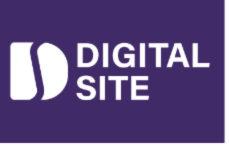The digital world is vast and competitive. Imagine owning a beautifully designed store tucked away in an isolated alley—without signboards, maps, or directions to guide potential customers. It’s the same with a website that lacks visibility. No matter how visually stunning or resourceful it is, it won’t attract visitors unless people can find it. This is where SEO Techniques become indispensable.
SEO techniques is your website’s way of saying, “Hey, I’m here, and I have exactly what you’re looking for!” This blog will explore how SEO works, why it’s vital for visibility, and how it can help your website rank higher in search engine results.
What Does Ranking Higher Mean?
When you use a search engine like Google, Bing, or Yahoo, it displays pages of results. But here’s the catch—over 90% of users only click on links on the first page, and the top three results often get the lion’s share of clicks. Keyword ranking Google means your website appears closer to the top of these results, making it more likely for users to visit your site.
For instance, if someone searches for “best coffee shops near me” and your coffee shop is listed on the first page (or even better, in the top three results), it will naturally attract more clicks and footfall compared to being buried on page two or three.
How SEO Techniques Helps Websites Rank Higher
1. Keyword Optimization: Speaking Your Audience’s Language
The cornerstone of SEO is keywords—the words and phrases people type into search engines. SEO marketing strategy involves identifying these keywords and weaving them naturally into your content. By doing this, you tell search engines, “This website has what users are searching for.”
For example, if you own a bakery, keywords like “best cupcakes in New York” or “affordable wedding cakes” ensure your site appears when someone searches for those terms. Tools like Google Keyword Planner or SEMrush can help identify the right keywords to target.
2. High-Quality Content: Answering Questions and Solving Problems
Search engines prioritize websites that deliver valuable and relevant content. Why? Because they aim to provide users with the best possible answers to their queries.
Creating high-quality, engaging, and useful content is a surefire way to boost your ranking. Whether it’s a blog post, product description, or how-to guide, your content should address users’ needs, solve their problems, and encourage them to stay longer on your site.
Tips for Content Creation:
- Break up content with headings and subheadings for easy readability.
- Use visuals like images, videos, and infographics to enhance engagement.
- Focus on evergreen topics that remain relevant over time.
3. Backlinks: Building Trust and Authority
Backlinks, or inbound links, are like endorsements from other websites. When reputable sites link to your content, it signals to search engines that your website is trustworthy and valuable. This boosts your domain authority, a critical factor in determining your rankings.
To earn backlinks:
- Create shareable content, such as in-depth guides or research.
- Collaborate with other websites through guest blogging.
- Share your content on social media to increase its reach.
4. Mobile Optimization: Capturing the Mobile Audience
Today, more than 60% of web traffic comes from mobile devices. Search engines now prioritize mobile-friendly websites, penalizing those that fail to provide a seamless mobile experience.
To ensure your website ranks higher:
- Use responsive web design so your site adjusts to different screen sizes.
- Optimize images and videos for faster loading on mobile devices.
- Simplify navigation for users on smaller screens.
A mobile-optimized website doesn’t just improve rankings—it also enhances user experience, increasing the likelihood of conversions.
5. Technical SEO: Building a Strong Foundation
Even the best content won’t rank well if your website has technical issues. Technical SEO ensures that search engines can crawl and index your site efficiently.
Key technical SEO aspects include:
- Site Speed: A slow-loading website frustrates users and lowers rankings. Use tools like Google PageSpeed Insights to check and improve your site’s speed.
- Secure Connection (HTTPS): Websites with HTTPS are prioritized in search results as they provide a safer browsing experience.
- XML Sitemaps: These act as roadmaps for search engines, helping them understand your site’s structure.
By addressing these elements, you create a solid foundation that supports your overall SEO efforts.
How Visibility Drives Traffic and Conversions
Ranking higher is only half the story; your website also needs to be visible to the right audience. SEO link building ensures your site reaches users who are actively searching for your products or services, increasing the likelihood of engagement and conversions.
Organic Traffic vs. Paid Ads
Unlike paid ads, which require continuous investment, SEO focuses on organic traffic—visitors who find your website naturally. Organic traffic is not only cost-effective but also sustainable, as SEO efforts compound over time.
For example, a fitness trainer invests in SEO by targeting keywords like “personal training in Los Angeles” and creating blogs about workout tips. Over time, their site climbs in rankings, attracting consistent traffic without ongoing ad spend.
Why SEO Techniques Is a Long-Term Strategy
One of the most significant advantages of SEO is its long-term impact. While paid ads deliver immediate results, they stop working as soon as the budget runs out. SEO marketing strategy, on the other hand, builds momentum over time, ensuring your website continues to attract traffic even months or years after implementation.
Common SEO Techniques  Mistakes to Avoid
Mistakes to Avoid
Even with the best intentions, some common missteps can hurt your SEO efforts:
- Keyword Stuffing: Overloading content with keywords can make it unreadable and result in penalties.
- Ignoring Mobile Optimization: With mobile traffic dominating, a poor mobile experience can drive users away.
- Overlooking Analytics: Regularly tracking your site’s performance is crucial for identifying strengths and weaknesses.
The Future of SEO
The world of SEO techniques is constantly evolving. Trends like voice search, AI-driven algorithms, and user-focused optimization are shaping the future of search. To stay ahead, businesses must:
- Focus on long-tail keywords that match conversational queries (e.g., “What are the best places to visit in Bhutan?”).
- Embrace AI tools to analyze user behavior and improve targeting.
- Prioritize user experience, as search engines continue to reward websites that deliver value.
Final Thoughts
SEO Techniques is more than a strategy—it’s an investment in your website’s growth and success. By helping your site rank higher and gain visibility, it connects you with your audience, drives organic traffic, and builds your brand’s authority.
Remember, the journey to the top of search results starts with small steps. Begin by optimizing your website for the right keywords, creating valuable content, and ensuring a seamless user experience. With consistent effort, you’ll not only improve your rankings but also establish a lasting presence in the digital world.
Take the first step today—your audience is searching for you!

